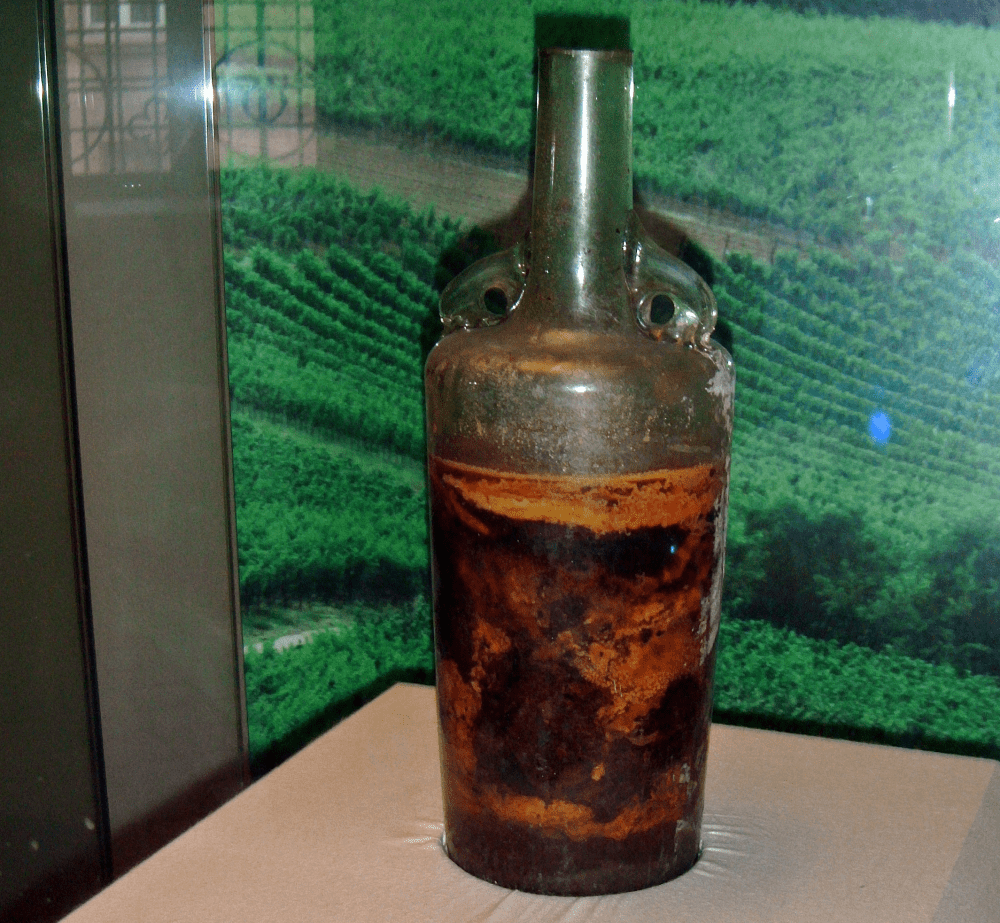An unopened bottle of wine believed to be around 1,700 years old sits in the Historical Museum of the Palatinate in Speyer, Germany. Its contents look suspect, to say the least – but on a microbial scale, it might not actually make you ill, even if the texture made you sick to your stomach.
The Römische Wein von Speyer, or Speyer wine, was retrieved from a Roman grave in 1867. Part of the bottle’s success in retaining its liquid contents rests on the fact that it was sealed with wax rather than a cork, which would’ve rotted away long ago setting the “wine” inside loose as it did.
We say “wine” because, over the course of around 1,700 years, the liquid will likely have lost all its alcoholic qualities to the point of forming a different grapey beast altogether. That said, nobody’s yet been able to ascertain for certain what the bottle now contains owing to the fact that, frankly, everyone’s a bit scared to open it.
Aside from the prospect of setting free some wine-dwelling genie variety, the hesitation surrounding cracking open the Speyer wine is because experts aren’t sure if the liquid would survive the ordeal.

“It’s not clear what would happen if air gets into the wine,” said Ludger Tekampe, who heads the department responsible for storing it, to The Local. According to Tekampe, despite the bottle’s incredible age “the content is remarkably stable.”
A thick layer of olive oil meant to preserve the bottle’s contents has clearly worked well here, which apparently accounts for more of the liquid in the bottle than the actual wine. Trust the Romans to plus up the decadence of wine with an inordinate measure of rich fatty olive oil.
The ornate 1.5-liter bottle is adorned with dolphin-inspired handles and is estimated to date back to 325 CE, reported Atlas Explorer. It was discovered alongside several shattered wine bottles that were also given as grave goods stored inside a Roman tomb.
If you’re the type who yearns for forbidden things (anyone for a shot of 2-billion-year-old water?), the interesting thing about the Speyer wine is that as far as pathogens are concerned, it might actually be safe to drink.
“Micro-biologically it is probably not spoiled,” said professor Monkia Christmann to Futurism, “but it would not bring joy to the palate.”
Aging wine can improve its quality as although it’s a perishable liquid, giving its constituent sugars, acids, and tannins a bit of time to cook inside the bottle can transform the mouthfeel and aroma for the better. Everything from the grape variety to the winemaking methodology can dictate how successful aging may be in improving the drinking experience of certain wines, but suffice it to say, 1,700 years is probably pushing it for even the most established of winegrowers.
Source Link: The World's Oldest Bottle Of Wine Might Actually Be Safe To Drink